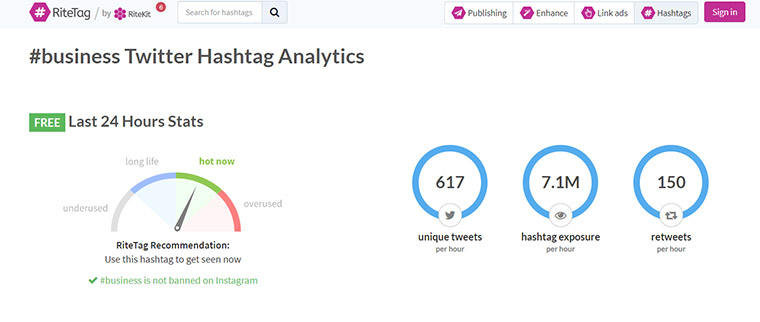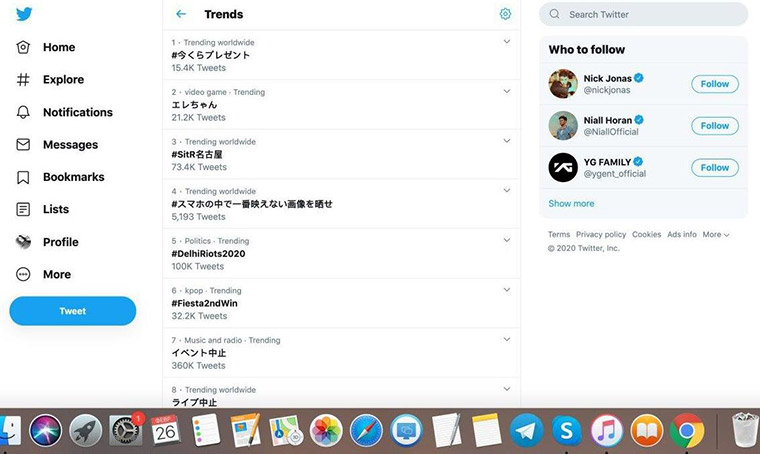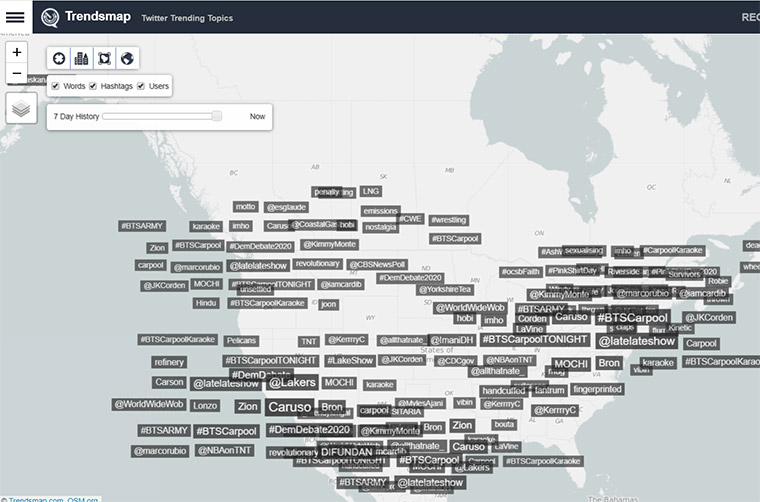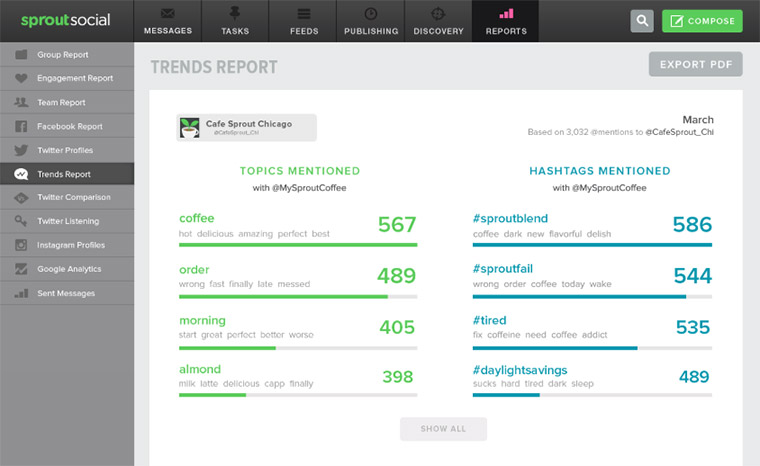What #Hashtag Are You? A Short Personality Test
- Let’s get to know what hashtag are you!
- The Hard Truth about Hashtag to describe yourself: Is it worth using?
- How can You benefit from Hashtags?
- What’s a Hashtag to Describe Yourself?
- Why do you need it?
- How to Make up a Hashtag to Describe Yourself?
- How to find Trending Hashtag to describe yourself?
- Do Hashtags still work?
Do you want to know what hashtag you are in a personality test? Hang on. There is something to clarify. As our previous practice shows, MonsterPost readers prefer serious web design and development articles. They do love some fun tests and quizzes.
Indeed, it's impossible to stay concentrated all the time, you need to relax from time to time. Don't you think that the best time for a respite is NOW?
Do you remember our "What CMS Are You?" test? Did you like its results?
OK, then, we offer you to know What #Hashtag Are You.
Since we're all using hashtags, some even overuse them ;), so why not?
One of the images you can find on Twitter via hashtag #smile.
It is difficult to overestimate the importance of hashtags for promotion and social media marketing.
What's good about hashtags?
- Expression of personal feelings and emotions.
- Self-mockery is used by writers.
- Pun.
- Words that do not exist 🙂
- And so on.
If you want to talk about hashtags, just let me know in the comment section.
Let’s get to know what hashtag are you!
The Hard Truth about Hashtag to describe yourself: Is it worth using?
New marketing tools are constantly appearing and alternating each other. Marketers, businessmen, and bloggers puzzle over the strategies to "stay on top" and keep the audience's attention. Despite a growing number of marketing tricks and tools, hashtags are holding their positions and springing up on social media.
Dozens of questions fly in the air when it comes to hashtags. Aren't they outdated? Don't they harm Instagram outreach? How many hashtags are OK for a caption? This article will get answers to important questions about hashtags and tips on creating a hashtag to describe yourself! Besides, you will find out what hashtags are trending now and could help you boost your Internet presence. #wheelsup

How can You benefit from Hashtags?
We, children of the digital world, know a hashtag and how it works in theory. Some people tend to stuff their captions with irrelevant but trending hashtags, thinking it will blow up their social media profile when it comes to practice.

No, hashtags don't work this way. The role of the pound sign is limited to:
- turning a word or a group of words into searchable links that lead to collections with posts of the similar thematic
- structuring content and making navigation on social media easy and convenient – people spend less time to find particular information
- tracking updates of the posts on the topical subjects
- conveying a long message, emotion, or attitude in a couple of words (e.g., #fail or #kidding hashtags can substitute long sentences)
- contributing to the global discussion – you can express your opinion (for instance, about elections), put a relevant hashtag, and let more people notice it
- making content more personalized unique (more information immediately below)
In simple words, hashtags can help to make your content more viewable. Everyone interested in conservation can find your eco-friendly Twitter profile easier if you put such hashtags as #conservation #environmentalism #sustainability, etc.
Apart from that, you can organize content in a convenient (for your followers) way. For instance, you can pool the posts with your looks with a #lookoftheday hash mark. Your vacation content can be marked with a #BaliVacation2020 hashtag.
Still, it's easy to lose yourself in the tons of other #BaliVacations. Using a unique personalized hashtag, in this case, makes sense.
What’s a Hashtag to Describe Yourself?
This is a hashtag that describes your personality the most. It can highlight a specific trait, appearance feature, reflection of your hobby, interests, work, specifics of your project or business, or something hilarious. It's hard to define a hashtag to describe yourself because it's a pure flight of imagination.
Here is a wonderful example of how to turn your unconditional love to sun and summer to:
- a catchy nickname
- a hashtag to describe yourself

- a name for an interesting project
If we talk about business, a great idea would be to develop a catchy tagline. For instance, if you produce recyclable bottles and cups, you can make up something like #lesswastemoresense. Yes, this hashtag breaks the rules as it's a bit too long. Still, it conveys a message and outlines the brand's philosophy, namely conscious consumption. If you break this hashtag into two parts (#lesswaste + #moresense), it would look easier to read but won't be unique anymore.
You can check out the discussion where people shared hashtags to describe themselves within USC. Probably, you will find some useful insights.
Also, some tools can generate a hashtag for you. Your answers to some questions will tell more about your personality. They help the software to create a hashtag to describe yourself. There is another instrument that generates a hashtag to describe your life. You can take the test as many times as you need.
You can also mix the hashtag to describe yourself with trending hash marks. On this analytical resource, you can check out hashtag exposure per hour, as well as the number of tweets and retweets.

Why do you need it? What Hashtag Are You Personality Test
Occasional visitors of your profile, as well as your potential clients and subscribers, will associate this hashtag with you or your business. It contributes a lot to the overall image of the company and the brand's awareness.
Moreover, they can use this hashtag in their posts, so more people can click on it and learn more about your company.
Besides, you can subscribe to hashtags on Instagram. The posts that contain this hashtag will appear on the feed. It's convenient because it allows seeing not all content but information you are interested in. The same happens to you in a supermarket. When you buy milk, you search for a sign "Diary Products" instead of hanging around and checking each shelf blindly.

In the era of information overload, it's awesome to have an opportunity to "dose" it. So, if you cover several topics, make up unique hashtags for each of them. People will be more likely to subscribe to it because they more or less know what they will read at breakfast 🙂
How to Make up a Hashtag to Describe Yourself?
Before starting a flight of fantasy, it's important to take some down-to-earth steps.
- Check out if a hashtag isn't already used.
- Before you pick up a hashtag, search for it on social media. First, it can be used by someone else, so it won't be unique anymore. Second, it can be tied to something negative associated with you or your business. Third, if any other brand or company has already used a hash mark, it can create an unwanted legal hassle.
- Don't Make it too Long.
- #longhashtagsarehardtoread right? A long hashtag:
- - is hard to read and memorize
- - it doesn't look appealing
- Besides, there are more chances to make mistakes when typing a hash mark from memory.
- A perfect hashtag should contain less than 3 words. Also, avoid two words with the same letter at the beginning and the end. For instance, a #thirdday hashtag looks confusing and hard to write.
- Avoid too many Hashtags in a Caption.
- Even though Instagram allows typing 10+ hashtags in a caption, it makes no sense. First, no one will read all those hashtags. Second, Instagram rules are changing, and you might not be aware of what rules you break now.
Finally, hashtags should perform their main function, not quantity but quality. Here is a detailed guide on how to use hashtags on Instagram. Speaking of Twitter, a perfect number of hashtags is less than three.
How to find Trending Hashtag to describe yourself?
The easiest way to find a trending hashtag on Twitter is actually Twitter. It offers the most accurate information on a subject:

The best thing about this option is that information in "Trends" is optimized toward your interests, what you see, like, who you follow. The worst thing is that it only reveals the trending topics but not hashtags. To find information about trending hash marks, you need a third-party app.
Trendsmap. What Hashtag Are You Personality Test
This navigation tool gives information about trending localized hashtags. It shows that people from different cities, countries, continents discuss various topics.

This tool is especially useful for marketers. They get a better idea about the segments of the audience and target campaigns to reach each of them.
Sprout Social. What Hashtag Are You Personality Test
If you are a brand, you might want to know what hashtags are already associated with your company. This Trends Report analyzes the incoming messages and shows the trending hashtags related to your brand!

How to use this information? It helps to understand what people like/dislike about your brand, what causes hype, what is useless, and so on. It helps to engage in a dialogue with your audience. It's a type of feedback from them.
#tagdef. What Hashtag Are You Personality Test
Here is another tool that gives you an idea about trending hashtags, including current, weekly, and all-time trends. The software doesn't only list trending topics but defines the hashtags. It helps marketers familiarize themselves with a subject instead of diving into it blindly. The hash marks will only work if they are relevant to the post.

hashtagify.me
This tool helps to find trending hashtags, as well as those related to them and gives detailed information about them such as:
- accounts that tweet a hashtag
- a popularity trend
- top countries that use it
- languages and top spelling used to type it
For instance, if you use #Coronavirus and want to drive up engagement, you can use related hashtags #China, #breaking, and #covid19.

All the tools have free and paid versions. In-deep insights will cost you money, but most tools offer free trials.
Would we recommend you use third-party tools? Yes. Here are the reasons:
- you get inside information that doesn't lie on a surface
- you can use those insights to plan ahead and get the greatest benefit from using hashtags
- you can monitor competitors' activity
- you can target your campaigns and activity toward specific groups and get stronger feedback
Do Hashtags still work? What Hashtag Are You Personality Test
We are talking about hashtags here, but some people doubt they still work. Yes, they do, but only if you follow some rules:
- pick up only relevant hashtags
- give the context to a hashtag (#fun hash mark doesn't tell a lot without a short explaining sentence)
- keep it simple
- don't use too many hashtags in a tweet or post
- follow the trends
Using hashtags requires some research and understanding of what you need them for. If you need them for engagement, pay attention to the trending hash marks. Think about simple, unique, and comprehensible variants if you want to organize the content.
According to the statistic, an Instagram post with at least one hashtag gets 12,6% more engagement than a post without it. The practice shows, though, that there is always space for exceptions. So, it's important to test a strategy, measure engagement, and analyze the results. A conscious and consistent approach doesn't protect from failures. It still helps to minimize risks and improve the strategy.
We hope that this guide was useful! Share your attitude to hashtags in comments and #staytuned for more information 🙂
What Hashtag Are You Personality Test FAQs
Yes, you can use hashtags to describe yourself on Facebook, though they aren’t popular there. It’s one of the least hashtags-friendly social media networks. Still, one hashtag per post is okay.
No, hashtags don’t work on this social media.
Speaking of Instagram, people put hashtags in captions, rarer in comments. You can write hash marks in comments but they don’t always work. You can test this method and measure the engagement. The studies show though that posts with hashtags in captions have bigger engagement.
Yes, of course. YouTube allows up to 15 hashtags per caption and the results of some studies show that captions with relevant hashtags do boost engagement and visibility. You can put hashtags in a caption, in a title, or above the title. Hashtags work if you use them wisely.
Read Also
Master the Hashtag Game! Top Tools to Track Instagram Hashtags Performance
2020 Instagram Stories Highlight Icons for Your Business
Get more to your email
Subscribe to our newsletter and access exclusive content and offers available only to MonsterPost subscribers.


Leave a Reply
You must be logged in to post a comment.